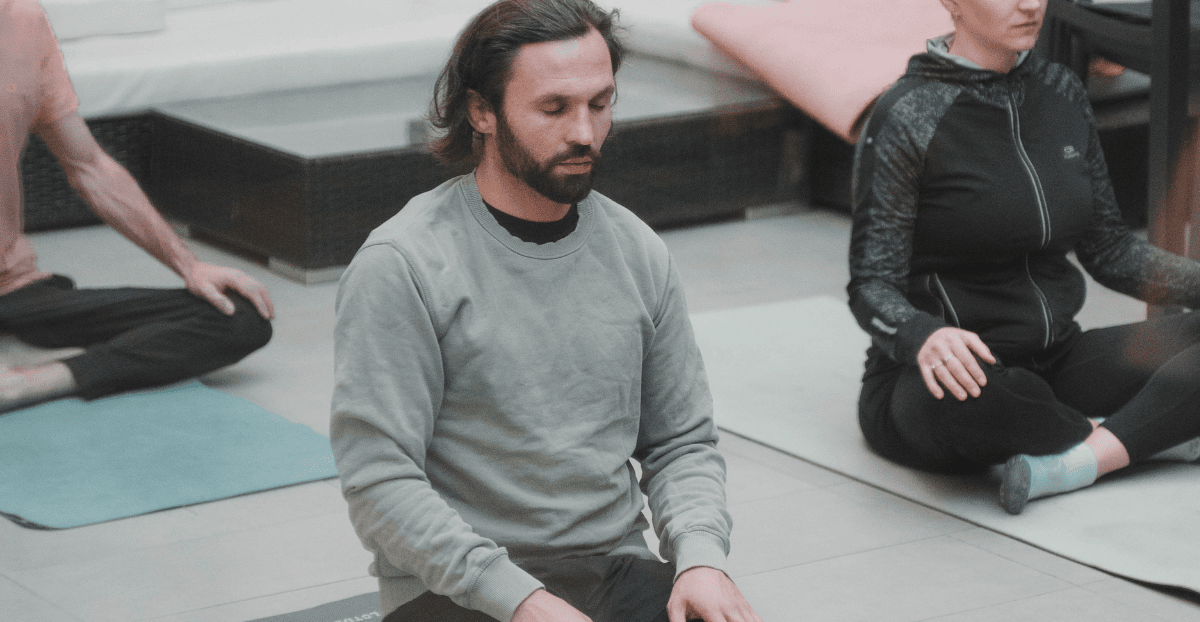“How do you keep up your meditation routine when you are traveling?”
That’s one of the most common questions I get asked as a meditation guide.
When you are on the go it’s very tempting and easy to break out of your routines and eventually forget about them altogether … and if not for the fact that some of your routines – like meditation – have actually proven to be helpful and valuable, there would be no problem.
So how do you keep up your meditation habit when you explore a new place or when you get overwhelmed by the activities and possibilities when joining a community or a coliving space?
The answers are fairly simple and the strategies are easy to implement. All it takes is a little dedication and a few little hacks to nudge yourself toward mindfulness and stillness regularly.

Sun and Co. guest enjoying stillness by the sea
Why Is It So Hard To Meditate When You Are Traveling?
In theory, meditating while traveling does not only sound achievable but also enjoyable!
Most people imagine themselves meditating on beaches, surrounded by nature and with breathtaking views. In reality, this will only happen rarely. If you are serious about this, you will be sitting most of the time in your room and simply doing the practice.
This little reality check reveals also the core problem:
Most people like to imagine an ideal scenario, but they are not practical about it.
If you really want to establish or keep up your meditation routine when traveling, you will need a clear plan … which (maybe) sounds a bit boring, but here is the upside:
Discipline is not a part of it.
Instead, I will tell you how to do this effortlessly.
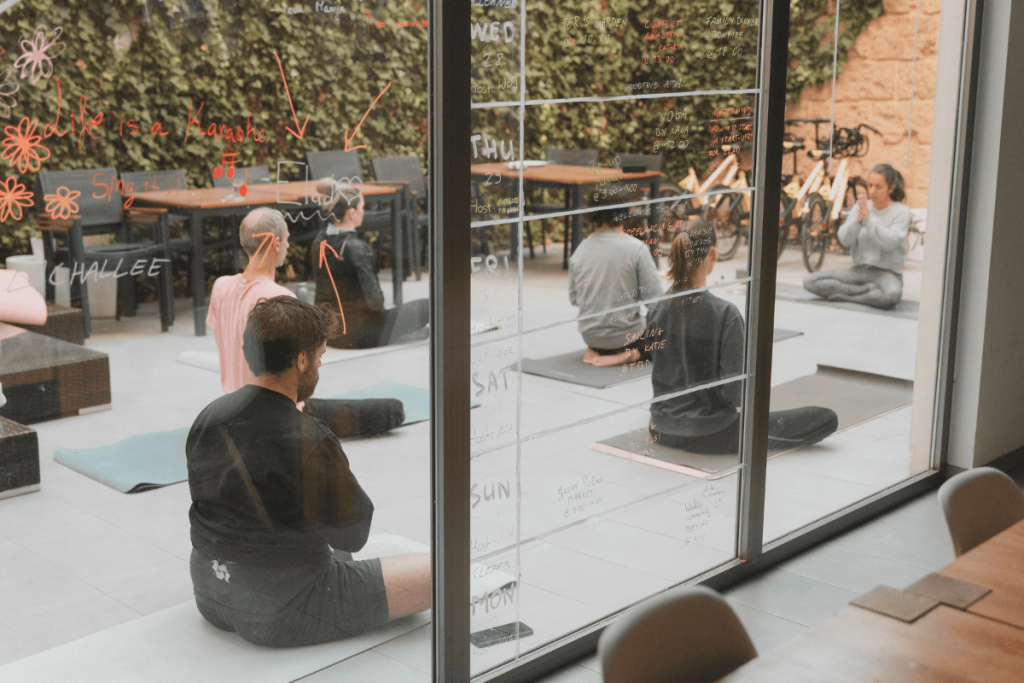
Short meditation during a yoga practice at Sun and Co.
How often should you meditate when traveling?
Most people will try to be nice to you and tell you that it does not matter how often you meditate. Every time you do it, it’s better than every time you don’t.
While that is true, I will be a bit more frank:
If you want to make meditation a habit and if you want to repeat it’s most positive and valuable effects, there is only one way.
Do it every day.
At least for 3 months, that’s the average time it takes to build a habit.
If you make it to 3 months, maybe try doing every day for 6 months in total. And if you manage that, why not go for a full year? … you see where this is going, right?
I personally find it easier to do something every day, than 3 times a week.
But I’ve also noticed how dedicating myself to the challenge and not to the outcome has helped me build the most influential habit of my life.
And it all starts with just 5 minutes of sitting – every day.
How long should you meditate when traveling?
This question is so common, that people have grown reluctant to ask it openly:
How long should you meditate? … and should the time you sit in meditation be any different when you are traveling?
The short answers are:
- Meditate however long you like.
- No, meditation is meditation.
The more helpful answers are:
- Mediate shorter than you can, even if it’s just five minutes.
- Adjust the length of your meditation to your environment and schedule.
The first point is one of the best pieces of meditation advice I have ever heard:
Meditate shorter than you can.
If you know you can sit for ten minutes, meditate five. If you feel like you could meditate for 15 minutes, stick for a few more weeks with ten minutes.
The goal is to feel successful and rewarded at the end of each session. Not defeated and frustrated. There is absolutely no need to push through meditation. None at all. Your sitting time will increase all on its own if you give it the time and patience needed.
And while it is true that at some point you should be able to meditate in every environment, there is no need to push for this level in the very beginning or under unusual circumstances.
Take me situation for instance:
- When I started reestablishing my meditation habit I meditated 5 minutes every day in the beginning. That was a time I could do anywhere and at any time.
- As my meditations grew longer, it was easy to do them when I had my own room or a dedicated room in a coliving space (for instance the chill room in Sun & Co) in which I could sit and practice.
- But when I travel with the van or when I have a busy schedule or deadline coming up, I will shorten my meditation times as much as I need to, BUT I will still sit and practice.
I want meditation to be a habit that I enjoy and that supports me. I do not want it to be torture I subdue myself to simply prove a point (for instance how f***ing mindful I am 💁🏻).
Which leads me to another point that seems to be riddled with many misconceptions.
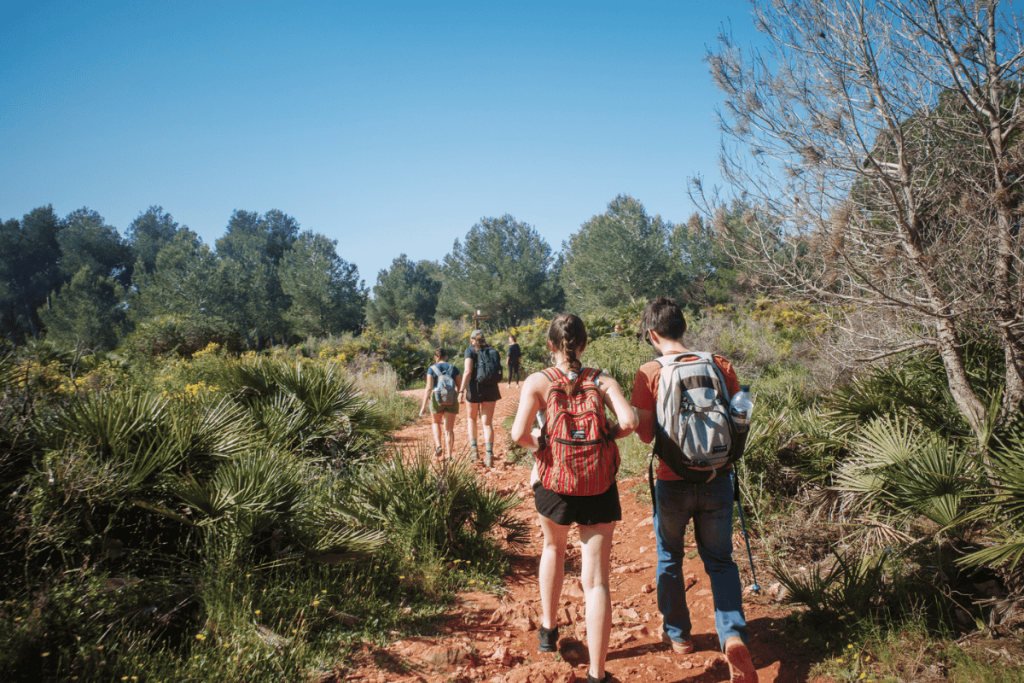
Walking meditation is a type of mindfulness practice.
Guided Meditation VS Sitting In Silence
For a very long time, I was of the opinion that guided meditations aren’t real meditations.
Today I am the first to admit that I was completely wrong about this.
Meditating all by yourself in silence is hard.
Too hard for most beginners.
If you desperately want to prove a point, have a go and knock yourself out! But if you really want to establish a healthy, consistent routine and really learn how to meditate, I believe you should listen to guided meditations.
A good guided meditation is not a distraction, but a valuable and effective support. Proper guidance will give you orientation and structure during an activity, in which it is all too easy and tempting to get lost.
Guided meditations basically teach you how to guide yourself. On top of that, you get the opportunity to experiment with many different mediation techniques, you would otherwise never get exposed to.
Guided meditations are also not second-class mediations. They are first-class meditations from experienced meditators. Sitting in stillness and silence on the other hand is the crown jewel. That’s the final stage of the practice.
When I travel and when it gets really stressful or simply too busy, I consider myself happy and privileged to turn on a guided meditation. On some days, that’s simply the best and most compassionate choice for myself.
But how do you even establish a regular practice? Especially in a constantly changing environment?
First Thing In The Morning
The first thing I do every morning is meditate.
Well, to be honest: I wake up, go to the loo, take a few steps, drink a glass of water, and get dressed. At this point I’m basically fully awake and (almost) ready to tackle the day.
That’s when I sit down to meditate.
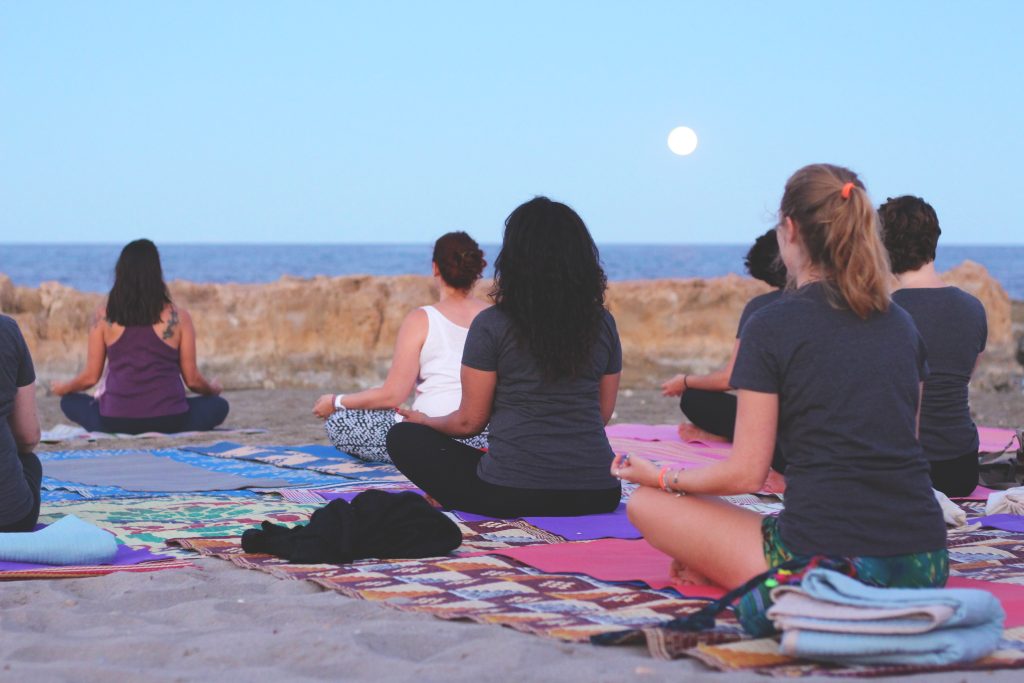
Full moon meditation.
I know that if I would move from my cozy bed straight into meditation, I would only find myself busy fending off the next wave of REM Sleep … which is a pretty cool challenge, but not exactly what you want if you try to keep up your meditation habit on travels.
Instead make things easy for yourself:
Wake up, get dressed – do everything you need to feel ready for the day and then sit down to meditate.
If you feel ready for a coffee, that’s when you should sit down.
Let the coffee, tea (or whatever it is you prefer in the morning) be your reward for meditating.
Personally I find mornings are the best time for meditation. And I’m making that statement as a non-morning person that loves – and I mean: LOVES – coffee.
When you meditate first thing in the morning, it becomes almost impossible to miss a meditation. Most people are not awake yet or busy with themselves. No distraction and the perfect opportunity for some quality time with yourself.
But once you get busy with your day, it becomes very easy to dismiss or forget about meditation.
And the only way to build a successful meditation routine is consistency.
The Formula for Meditating While Traveling, Exploring and Coliving
So here’s your formula to keep up and build your meditation habit while traveling:
- Do it every day (consistency)
- Sit shorter than you can (effortlessness)
- Make it easy for yourself (simplicity)
- Make it a non-negotiable (priority)
And here is a little extra for all the traveling meditators ⤵️
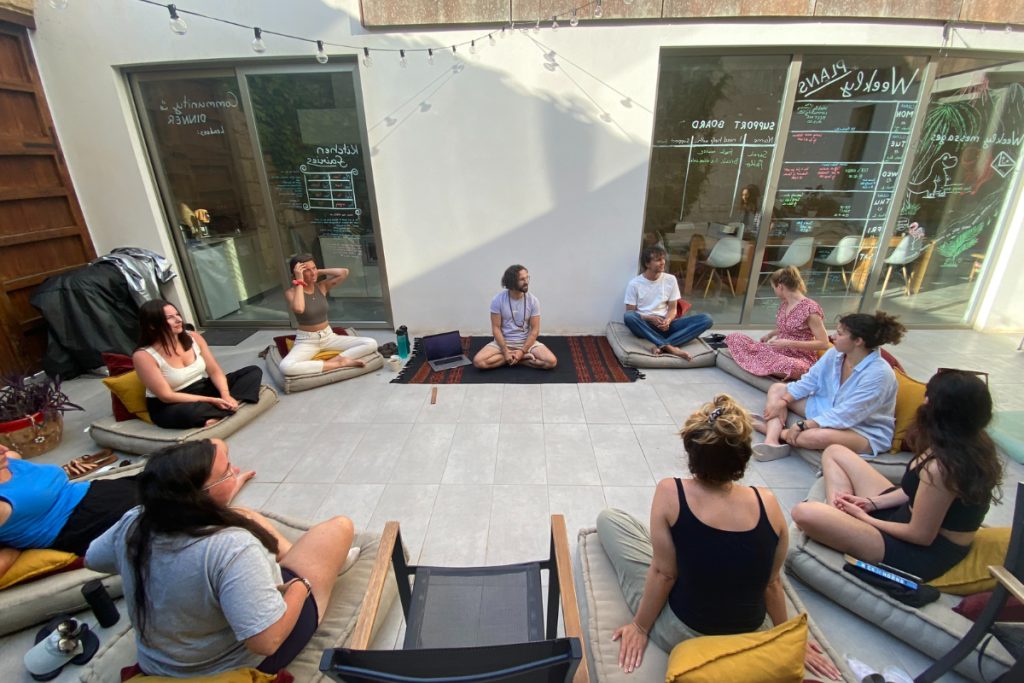
Wojtek leading a meditation workshop at Sun and Co.
The Power Of Community
If you find yourself in a community space like a coliving, share it with the people.
Many people are interested in meditating and they struggle to keep it up.
You can organise group sessions, you can hold each other accountable or you can create a challenge together.
If you feel comfortable at some point, you can even start guiding meditations. That’s what I did at some point and it has become something I am offering wherever I go.
Sharing your meditation journey does not only encourage others, but also opens up the space to learn if more experienced meditators are present.
We often have this idea of the lonely meditator in a cave, sitting perfectly still, surrounded by pristine nature and enveloped in silence.
That is a romantic idea, but that has never been reality.
Most of the meditators history has seen have meditated in groups, in the middle of a town or in a busy monastery. Before meditation has become the practice of the lonely wanderer, it has been a group practice.
Even the Buddha himself had teachers, supporters and friends and when he became enlightened that did not change.
Meditation is a community activity.
If you get the chance, practice, share and honor it in the way it was intended:
As community.
Wojtek.
